All the Ways to Use a Butternut Squash
This hearty vegetable is one of our favorite products of fall. Really, when you think of fall, don’t you automatically think of deliciously creamy, nutty butternut squash (and other winter squash varieties too, of course). It’s an incredibly versatile food—there are so many ways to use a butternut squash.
In fact, in an article by Faith Durand, a writer for the online foodie site, Kitchn (www.thekitchn.com), I discovered eight delicious ways to enjoy a butternut as well as some very helpful advice on how to get the thing peeled and open (not an easy task, as you know).
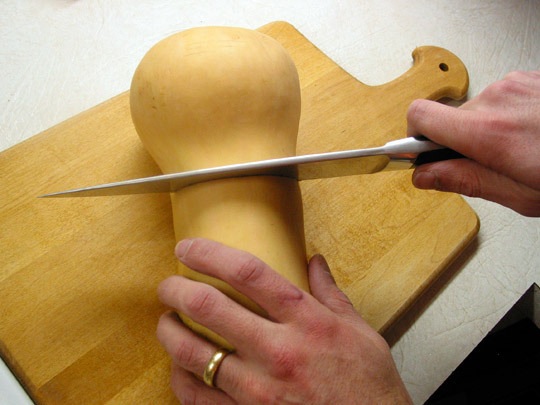
So, peeling: First, cut the squash in half (or in thirds, if it's particularly big).
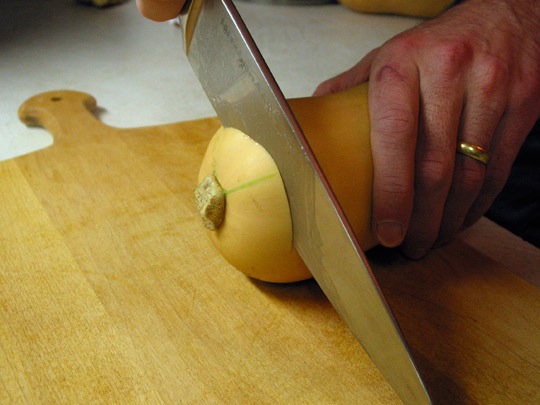
Then cut off the top and bottom so it's flat and you can stand it on its end.
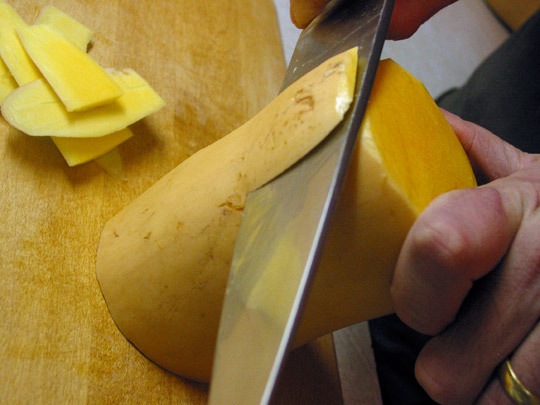
From there you use your sharpest chef's knife and shave off the outer rind.
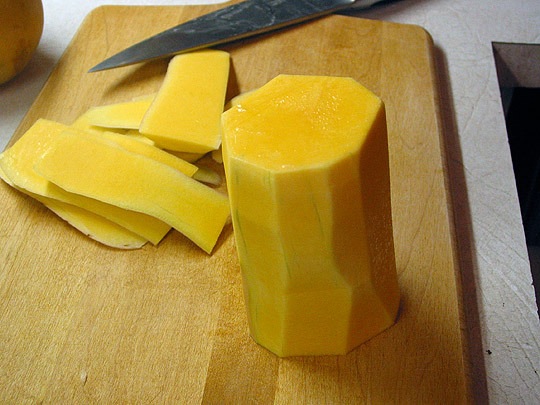
This method allows you to peel the squash in a fraction of the time (and without cramped fingers) than the more traditional way would take. Yes, you lose a little more squash flesh, but it's totally worth it.
I do take the time to peel the rounded end, though, when I’m not in a hurry. If I don’t have time to peel it, I’ll save it and still bake it when I’m using the oven for other baking.
Now, on to those many ways to use your squash. And we thank Faith and Kitchn for sharing these wonderful ideas. Soup and pie are familiar ways to use butternut squash, but these other ideas were new to me. See if there isn’t something new to you, as well:
1. Make soup. A comment on soup, anyway, though. One thing about squash soup, it’s so rich that Faith takes a step up from a basic puree, and so rich that there’s no need for too much fat, making it a healthy soup choice. While a basic pureed squash soup is good, Faith takes it up a notch by blending it with tomato soup. Whether you simply mix it into canned or homemade tomato soup, it’s creamy and filling.
2. Bake it into a pie. And a comment on pie, too. Our squash pies were always sweet—a delicious dessert. But Faith suggests making small, savory, handheld pies.
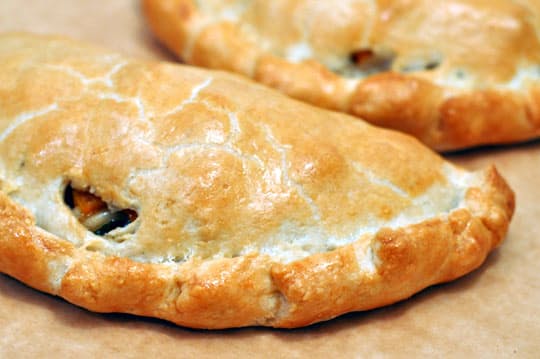
BUTTERNUT SQUASH AND PARMESAN PASTIES (yield: 2 large or 4 small round pasties)
Your favorite pastry recipe
FILLING
8 ounces butternut squash, peeled and cut into 1 inch cubes
1 medium red onion, diced
1 clove garlic, crushed
1 tablespoon finely chopped fresh sage
1 tablespoon finely chopped fresh parsley
1/4 cup grated Parmesan cheese (more, if preferred)
2 tablespoons pine nuts, toasted
Sea salt
Freshly ground white pepper (or black)
1 egg, beaten
To make pasties
Preheat oven to 375°F. In a large bowl, combine butternut squash, onion, garlic, sage, parsley, Parmesan cheese, and pine nuts.
Roll our pastry to 2 large rounds (or 4 small rounds). Spoon mixture over half of each dough round, leaving a 1-inch border around the edge. Sprinkle well with salt and pepper. (If making 4 small pasties, then divide the filling amongst the 4 rounds.)
Moisten the edges of the dough with beaten egg. With cool hands, fold the pastry over and crimp the edges. (Use any crimping technique you like, just make sure it is well sealed. Cut a small slit in the top of each pasty. Brush all over with beaten egg.
Bake until golden and cooked through, about 40 minutes. Serve hot or warm.
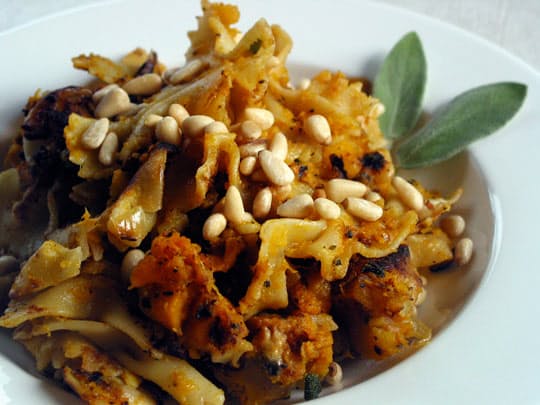
3. Sauté with pasta. Just bake 1-inch squash cubes for about 40 minutes (spread over a greased baking sheet) at 375°F. About half-way through the baking, start sautéing minced garlic, chopped onion, and chopped fresh sage in lots of olive oil (I like about ½ cup). These ingredients are all to taste. Add toasted pine nuts (about 1 cup) and continue sautéing. Add your baked squash cubes, stir until coated with oil. Then fold this mixture into cooked farfalle pasta and garnish with extra sage leaves, if you have them. Faith says this is so good that she and her husband served it at their wedding.
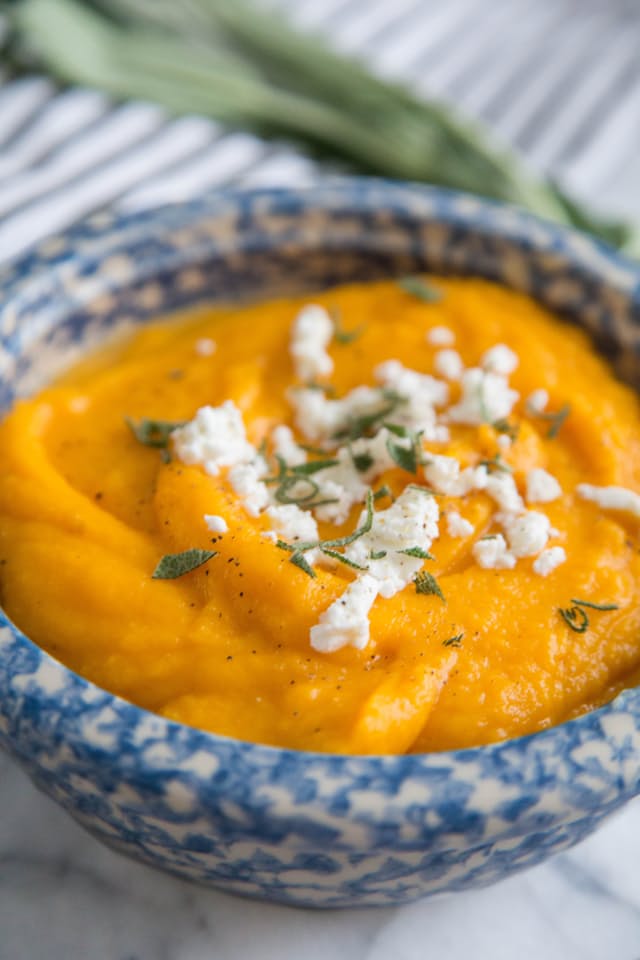
4. Puree it with cheese. This is creamier than mashed potatoes, and just as good. To serve two you just bake a medium (about 2 pounds) squash, scoop out the flesh and puree it. Season with salt and pepper to taste, and add at least 1 ounce of soft mild goat cheese. Blend until the cheese is well combined and serve immediately. This is VERY good.
5. Toss it in a salad - Warm, just-tender chunks of sweet squash make a wonderful add-in for a spicy arugula salad (and fall is the perfect time for cold weather-loving greens like arugula).
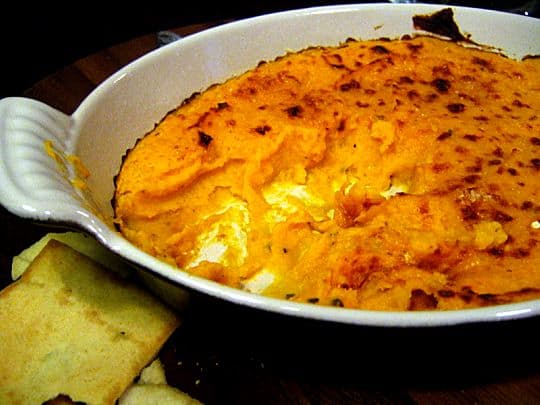
6. Make a dip. Pureed squash blended with salt and pepper and lots of grated Parmesan cheese makes a great dip with raw veggies and whole grain crackers or pita chips! Use at least 1 cup of cheese, add a little half-and-half or cream (about ¼ cup), and a dash of olive oil (maybe a tablespoon). Bake it for about 20 minutes at 400°F. After 15 minutes, turn on the broiler so that the top of the dip gets brown.
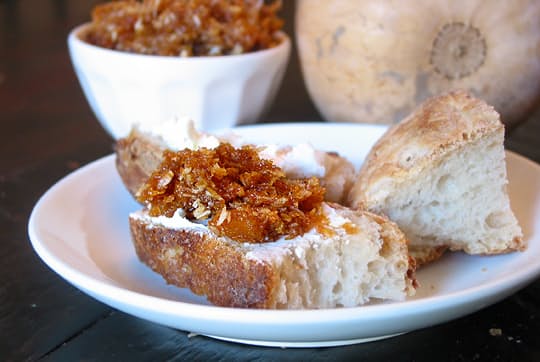
7. Cook it into sweet jam. This unusual and sweet squash compote has Brazilian and Portuguese roots, and is amazingly good.
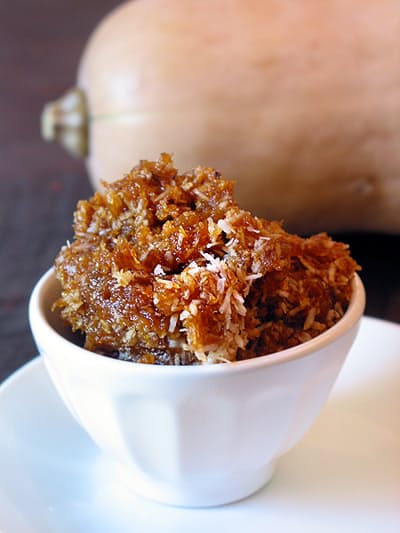
BUTTERNUT SQUASH AND COCONUT JAM (yield: 4 cups)
1 large butternut squash, approximately 2 pounds
2 cups milk
2 cups white sugar
1/2 cup dark brown sugar
1 cinnamon stick
8-10 whole cloves
1 vanilla bean, split
1 cup dried unsweetened coconut
Peel the butternut squash and cut into small pieces - about 1 inch or less to a side. You can also grate it. The smaller you cut the pieces the faster it will cook. Put in a large (4 quarts or more) heavy pan over medium heat. Add the milk, sugars, cinnamon, cloves, and vanilla.
Cook over medium heat until the squash is soft and tender. Keep a close watch on it as the milk simmers; it has a tendency to foam up. After the milk comes to a simmer it will be 10-15 minutes before the squash is soft. As the squash becomes soft and tender, mash it into a pulp with a potato masher or a pair of forks. Stir well.
Keep the heat on medium and continue simmering, stirring frequently. When the mixture is reduced and thick like jam, remove from the heat. Keep a close eye on it so it doesn't burn as the milk reduces. This will take between 20 and 30 minutes.
Stir in the coconut and let cool before serving. Store in the refrigerator. This should keep for some time.
8. Simply roast it. We enjoy it this way alongside another vegetable, baked potatoes, and tossed salad. But the secret is to roast it with a little pure maple syrup in the cavity.
I close with the question, “What is your favorite thing to do with butternut squash?” I’m betting you have ideas Faith hasn’t thought of; after all, there are so many ways to use butternut squash!
- www.thekitchn.com
 Alice Osborne
Alice Osborne
Weekly Newsletter Contributor since 2006
Email the author! alice@dvo.com
